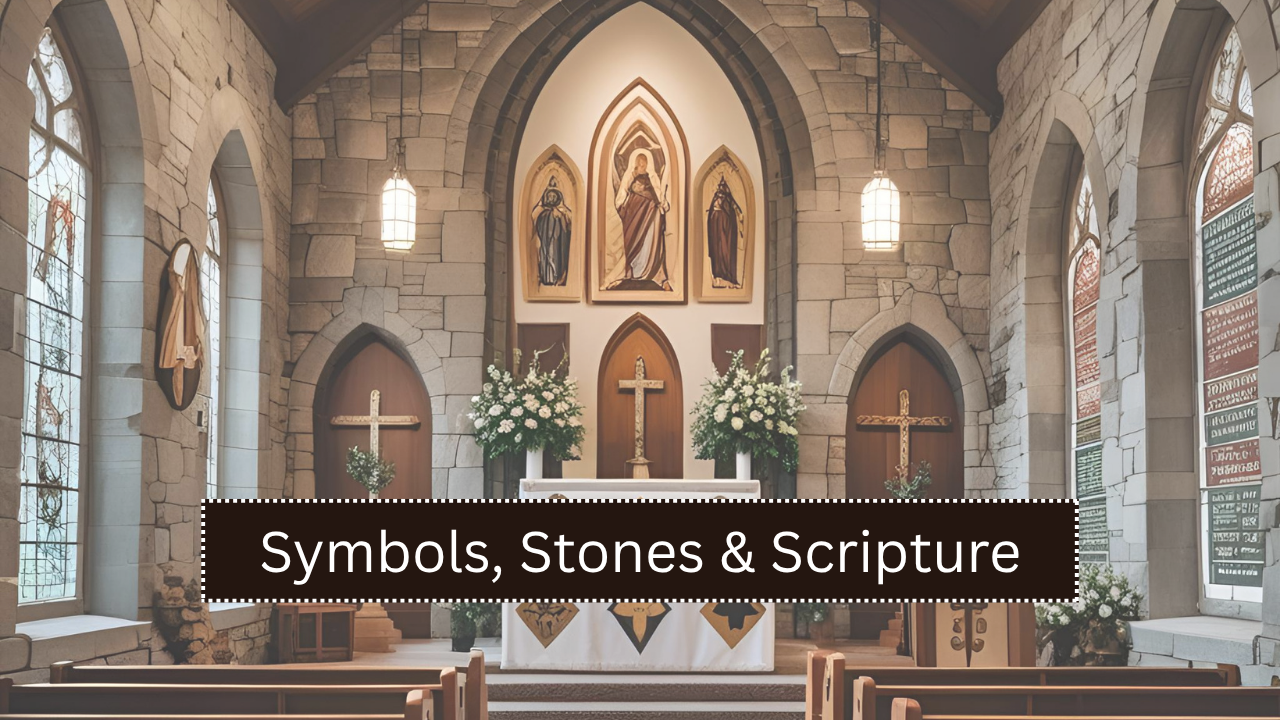Church décor often appears to be simple ornamentation to the casual eye, but deeper exploration reveals centuries of hidden meaning. Each carving, painting, and stone placement inside a traditional church reflects profound theological beliefs, Biblical stories, and community identity. From medieval cathedrals to local parish churches, symbolic décor has served both spiritual and educational purposes. Understanding these elements allows a fuller appreciation of how sacred spaces were crafted not just to inspire awe but to communicate divine truths.
Sacred Symbols in Church Décor
Christian symbolism goes beyond crosses and halos. Early church builders incorporated multiple visual cues that conveyed deep theological concepts, helping illiterate congregants understand the stories of faith.
- Crosses
- Latin cross symbolizes Christ’s crucifixion
- Greek cross represents balance and eternity
- Celtic cross merges Christian and pagan traditions
- Fish (Ichthys)
- Used by early Christians as a secret symbol
- Represents Jesus Christ, Son of God, Savior
- Alpha and Omega
- First and last letters of the Greek alphabet
- Signify God’s eternal nature
- Lamb
- Refers to Jesus as the sacrificial Lamb of God
- Often placed near the altar to denote redemption
- Dove
- Symbolizes the Holy Spirit
- Frequently seen descending above fonts or pulpits
- Circle
- Denotes eternity and perfection
- Found in stained glass or architectural details
Common Christian Symbols and Meanings
| Symbol | Meaning | Common Location |
|---|---|---|
| Cross | Christ’s sacrifice and resurrection | Altars, rooftops, grave markers |
| Fish (Ichthys) | Early Christian identity | Doorways, stone reliefs |
| Dove | Holy Spirit, peace | Above baptismal fonts, ceilings |
| Lamb | Christ’s role as a sacrifice | Near altars, central nave reliefs |
| Alpha & Omega | God as eternal beginning and end | Chancel screens, lecterns |
| Crown | Christ’s kingship and divine authority | Stained glass, bishop’s throne |
| Anchor | Hope and steadfast faith | Carvings, nautical regions |
Stones that Speak: Architectural Messages
Church architecture, especially in Romanesque and Gothic traditions, was designed with symbolic stone elements meant to guide the believer’s thoughts toward divine mysteries.
- Keystones and Arches
- Represent strength and unity under Christ
- Often carved with Biblical scenes or saints’ faces
- Pillars and Columns
- Symbolize the Church as a support of truth
- Twelve columns can signify the Apostles
- Rose Windows
- Circular stained glass often aligned with cardinal points
- Represent divine perfection and the Virgin Mary
- Vaulted Ceilings
- Lead the eye upward toward heaven
- Emphasize the transcendence of God
- Crypts and Foundations
- Stand for humility and continuity
- Often house relics or saints’ remains
Symbolism in Church Stonework
| Architectural Element | Symbolic Interpretation | Era of Popularity |
|---|---|---|
| Arch/Keystone | Christ as the cornerstone of faith | Romanesque, Gothic |
| Columns | Apostolic foundation and Church stability | Early Christian to Baroque |
| Rose Window | Mary’s purity, divine light | Gothic |
| Vaulted Ceiling | Heavenward journey of the soul | Gothic, Renaissance |
| Crypt | Death, rebirth, and reverence | Romanesque |
Scripture as Visual Narrative
Biblical scenes form the narrative core of church décor, especially in settings where congregations lacked access to written Bibles. These artworks served as teaching tools.
- Frescoes and Murals
- Depict parables and major events like the Last Supper or Crucifixion
- Often organized sequentially to guide the viewer’s understanding
- Stained Glass
- Tell stories through light and color
- Highlight lives of saints, miracles, and divine interventions
- Sculpted Doorways
- Known as “Portals of Faith”
- Include scenes like the Last Judgment or Garden of Eden
- Mosaic Floors
- Feature symbolic animals and Biblical themes
- Emphasize spiritual journeys and moral lessons
Forms of Scriptural Décor in Churches
| Décor Type | Biblical Content | Teaching Purpose |
|---|---|---|
| Frescoes | Life of Christ, Apostles, Old Testament | Catechism and instruction |
| Stained Glass | Saints’ lives, miracles, prophecies | Moral guidance through visual storytelling |
| Sculpted Portals | Judgment Day, Genesis, heavenly visions | Reminder of salvation and repentance |
| Mosaic Floors | Animals, plants, stories of pilgrimage | Guide to Christian virtues and trials |
Colors and Their Theological Role
Church décor also depends heavily on color symbolism, particularly in liturgical art and vestments.
- White
- Symbolizes purity and resurrection
- Used during Easter and baptisms
- Red
- Denotes martyrdom, the Holy Spirit, and Pentecost
- Seen in feast days of saints and apostles
- Purple
- Represents penance and preparation
- Employed during Advent and Lent
- Gold
- Associated with divine majesty and eternal glory
- Frequently used in halos, tabernacles, and icons
Liturgical Color Significance
| Color | Meaning | Liturgical Use |
|---|---|---|
| White | Purity, joy, resurrection | Easter, Christmas |
| Red | Martyrdom, Holy Spirit | Pentecost, Saints’ Feast Days |
| Purple | Penance, royalty, preparation | Lent, Advent |
| Gold | Glory, eternity, divine light | High feast days |
Hidden Creatures and Allegorical Designs
Churches also feature animals and mythical creatures used to symbolize virtues, vices, and theological truths.
- Lion – Strength and the Resurrection (associated with St. Mark)
- Peacock – Immortality and eternal life
- Serpent – Sin and temptation
- Pelican – Christ’s self-sacrifice (feeding young with its own blood)
- Dragon – Evil, often shown under the feet of saints
These figures appear in capitals, floor mosaics, and painted vaults, carrying both regional and religious interpretations.
Purpose Behind the Design
Symbolic church décor was not created for aesthetic alone. Each element had a multi-layered purpose:
- Educate believers in the faith through visual storytelling
- Inspire awe and reverence through grand, mysterious designs
- Reflect local culture and saints’ legends in sacred settings
- Reinforce doctrinal messages in a non-verbal manner
Looking Ahead
Church décor is a theological language carved in stone, painted in glass, and woven into ritual colors. Symbols, architecture, and scripture all combine to make churches more than just places of worship — they become spiritual maps. Each visual choice echoes centuries of tradition and speaks directly to the soul. Understanding these messages can turn every church visit into a journey through faith, history, and divine design.

